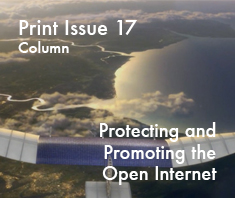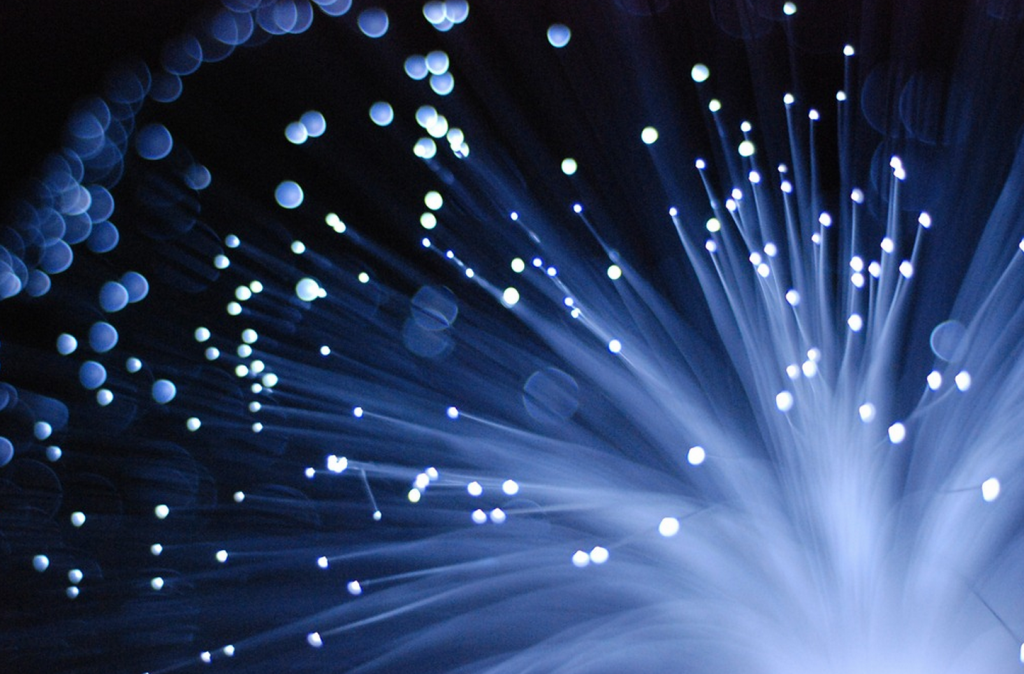Protecting and Promoting the Open Internet
By Ingrid Burrington
This column has been pulled from SFAQ print issue 17.
As of June 21, 2014, there have been 188,272 public comments filed on the FCC’s website for docket 14–28, “Protecting and Promoting the Open Internet.” The comments are generally brief, sometimes just one sentence, often expressing frustration at cable companies for exercising too much control over consumers. People really don’t like tiers, or fast lanes, and they really, really don’t like Comcast. Often, letters in support of net neutrality speak of keeping “the Internet” or, sometimes, “my Internet” free and open. There’s a shared assumption about what the Internet is or should be, which generally goes undefined aside from emphasizing that tiered access is fundamentally opposed to it.
The public comment letters are compelling, not only because hundreds of thousands of citizens are engaged on a subject that’s been generally the purview of policy wonks for the past decade, but also because they prompt a question that is far more complicated than it first appears: what do people even mean when they say “the Internet?”
In a consumer context, the network at stake in net neutrality is what’s known as the “last mile” connection—the part of the network-of-networks that actually connects your machine to a network that connects to the other networks. The materials used for last-mile connections— copper, coaxial cable, and wireless towers—often are older, slower, and more prone to damage than the parts of the Internet stored in data centers, the parts your last mile connects to.
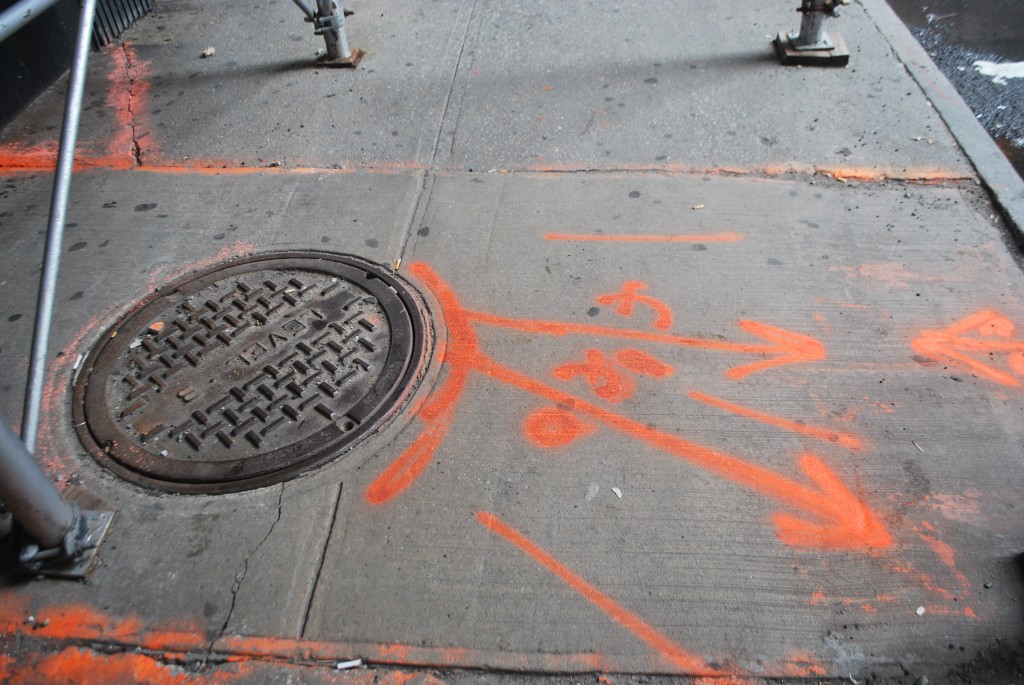
Level 3 Communications manhole and cable markings, lower Manhattan, 2014. Photograph by Ingrid Burrington.
Those not-last-mile-parts, the physical cables, server racks, wireless towers, and data centers—the infrastructure of the Internet that takes up more and more postindustrial landscape in the United States—are not really front and center in debates about net neutrality, despite the fact that they are crucial to maintaining what last-mile consumers think of as our open Internet. It is hidden infrastructure, proprietary, remote, neither open nor ours. This physical disconnect, further enabled by misleading metaphors that render servers into clouds, limits one’s vision of the Internet as a place (and agency in that place) to a browser window.
For me, it’s been useful to think of the Internet as a whole (both its physical network and the content hosted on the network) as infrastructure, because infrastructures aren’t metaphors. You can point at infrastructure, you can map it, you can ask how it works and who controls it. The contours of the network have changed dramatically since the coining of the term “net neutrality,” and the terms of the current debate have yet to accommodate those changes. The following notes on pieces of infrastructure are not necessarily definitive statements on where net neutrality is or could go, but they are reminders, perhaps, of what is at stake.
1. Dark Fiber
The concept of network neutrality emerged around 2002 as the first tech bubble was more or less crashing. During the first bubble, there was a massive rush by many different companies to build network infrastructure. In non-last-mile cases, this meant fiber optic cables. Optical fiber is, well, what it sounds like: a very thin (something a little larger than a strand of human hair) material (often glass) used to transmit data as pulses of light. (It is useful, humbling a little, to think about how all the rhetorical places and the tangle of bodies and stories and code that we think of as “the Internet” can ultimately be reduced to pulses of light in thin strands of glass buried in dirt and oceans.) Fiber is much faster, and has a longer shelf life, than the copper and coaxial that tends to be in last-mile connections.
The first tech boom led to the construction of lots and lots of fiber lines, sometimes by private network providers and sometimes by utility and telephone companies. A lot of companies added more fiber to their networks they actually needed to use, anticipating future demand and not wanting to have to tear up the earth in a few years’ time. This unused fiber is called dark fiber—because it isn’t “lit” with data pulsing through it.
Building networks is expensive, and a lot of the companies that did it ended up in serious financial trouble when the need for network services abruptly dropped with investment in startups. The sheer volume of available fiber also drove down the price of the product. Many of the companies that had originally laid fiber went bankrupt and ended up acquired by venture capital firms and other Tier 1 networks. (“Tier 1” is a term used to describe really large networks that can connect to every other network on the Internet—they make up what’s called the Internet backbone, another metaphor that weirdly makes the Internet both corporeal and inchoate, an unfathomable spine of infinitely extending glass ganglia.)
Because the cost of lighting up dark fiber is high, most of it is leased or sold to entities that might need private networks—consortia of academic institutions, public libraries, municipal governments, banks, high-frequency trading firms. It isn’t exactly clear how many institutions have private fiber networks, which gives the term “dark fiber” a nice figurative resonance
Another resonance in dark fiber’s name: no one seems to know how much exists. There are estimates of how much money was spent in the 1990s building the networks ($90 billion in 2001, according to the Wall Street Journal), but in the alchemical process of seemingly un- ending mergers, acquisitions, and rebranding, it’s hard to know exactly how much dark fiber is out there, who owns it, and where it runs. Companies have recently cited these uncertainties as reasons they’re building new fiber networks—while there is dark fiber in some places, not much of it goes into that aforementioned last mile. Verizon’s attempt to build a nationwide fiber network, FiOS, has supposedly been stalled mostly by the fact that landlords and home-owners don’t want to pay the cost of getting the fiber into the home. Fiber connections can be made in cable boxes that connect to copper and coaxial in the home, but it slows down the connection, which kind of undermines the entire point of having fiber cable. Dark fiber is vast, and it apparently exists, but we don’t know where it is, companies aren’t going to tell us where it is, and wherever it is, it’s not where companies want it to be.
2. Content Networks, Network Geography
So there’s an unseen, un/under-mapped network of incredibly valuable strands of glass below the surface of the earth, and a number of private interests control it. That number, apparently, is getting smaller, and it’s increasingly including not just traditional telecommunications companies but also content providers associated with the version of “the Internet” that exists in the browser. As Robert McMillan has eloquently argued in Wired, companies like Google, Facebook, and Netflix have been effectively constructing and using Internet “fast lanes” for a long time—their private networks directly connect to last-mile Internet Service Providers.
Google has been purchasing dark fiber and building out its own fiber optic network, known as Google Fiber, for nearly a decade, and was involved in the building of a new submarine cable in Asia in 2010. It currently owns over 100,000 miles of cable globally. This is partly for the purposes of better connecting their own data centers to each other, but they also have pilot programs to bring high-speed fiber optic Internet to different cities in the United States.
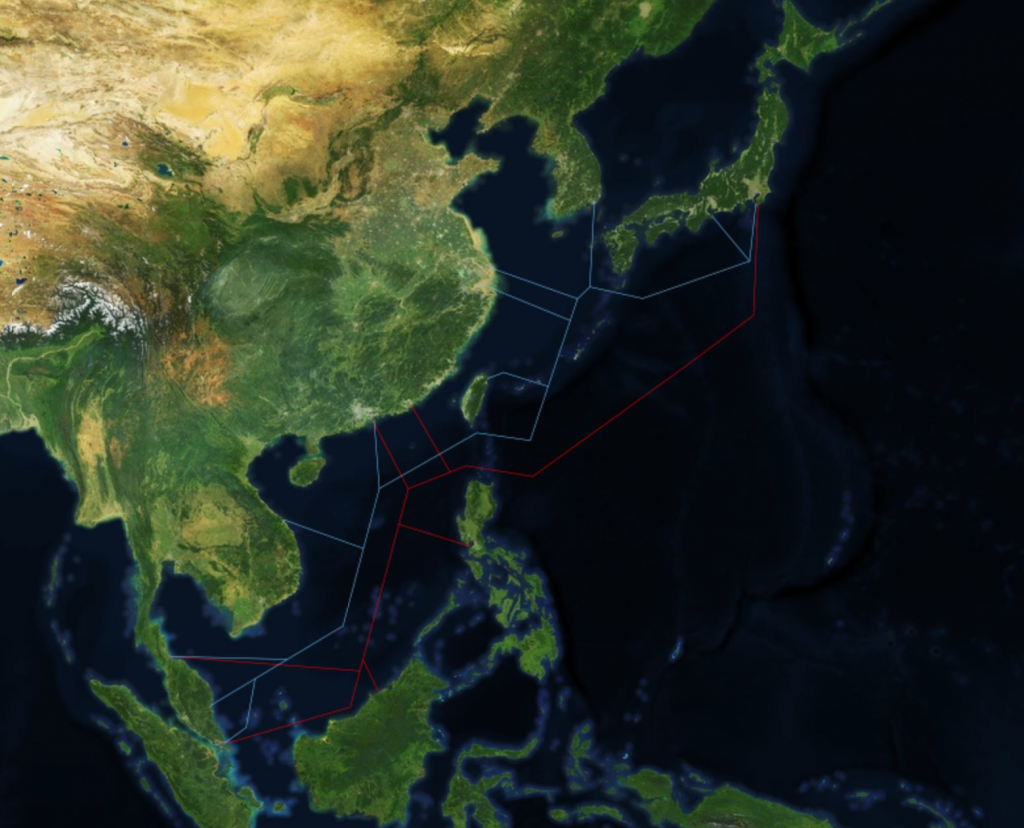
The Southeast Asia Japan Cable (a submarine cable partially owned by Google) and the Asia Pacific Gateway (a sub- marine cable partially owned by Facebook). Submarine cable data from Telegeography, satellite imagery from Mapbox.
Facebook has also invested in submarine cables and fiber networks, and in 2013 launched Internet.org, a consortium of mobile hardware manufacturers dedicated to “making affordable Internet access available to the two thirds of the world not yet connected.” Reading the website and Zuckerberg’s white papers about the initiative, one can easily imagine the original copy describing the two thirds of the world not yet connected to Facebook. In his paper “Is Connectivity [to Facebook] A Human Right?” Zuckerberg frames this as a means to an end:
“[Even] when they can afford it, many people who have never experienced the Internet don’t know what a data plan is or why they’d want one. However, most people have heard of services like Facebook and messaging and they want access to them. If we can provide people with access to these services, then they’ll discover other content they want and begin to use and understand the broader Internet.”
Apparently for Internet.org, Facebook is the carrot that woefully ignorant non-Internet users will follow toward greater connectivity.

Rendering of an Ascenta drone. Facebook acquired Ascenta in order to deliver Internet from the sky. Courtesy of the Internet.
Internet.org’s splashiest proposal for improving connectivity so far has been what for all intents and purposes could be called Skynet: small, solar-powered drones, capable of hovering for extended periods of time, beaming wireless Internet to the earth. To that end, both Google and Facebook have acquired two drone-manufacturing companies—Titan Aerospace by Google and Ascenta by Facebook—the latter of which has become part of Internet.org’s Connectivity Lab. Here, network infrastructure is no longer a tangle of dark fiber; it announces itself, it commands the sky.
While I’d love to believe this is an act of pure benevolence on the part of Internet.org, it is difficult to imagine why Facebook would flat-out acquire companies like Titan or Ascenta for this project if its resulting technology isn’t meant to be proprietary. Facebook, in many ways, performs the functions of a state: it renders people into legible subjects, translating self-expression and interactions into structured, monetized data. While Zuckerberg and Internet.org assume that connectivity is a human right, being connected while remaining illegible to the network isn’t.
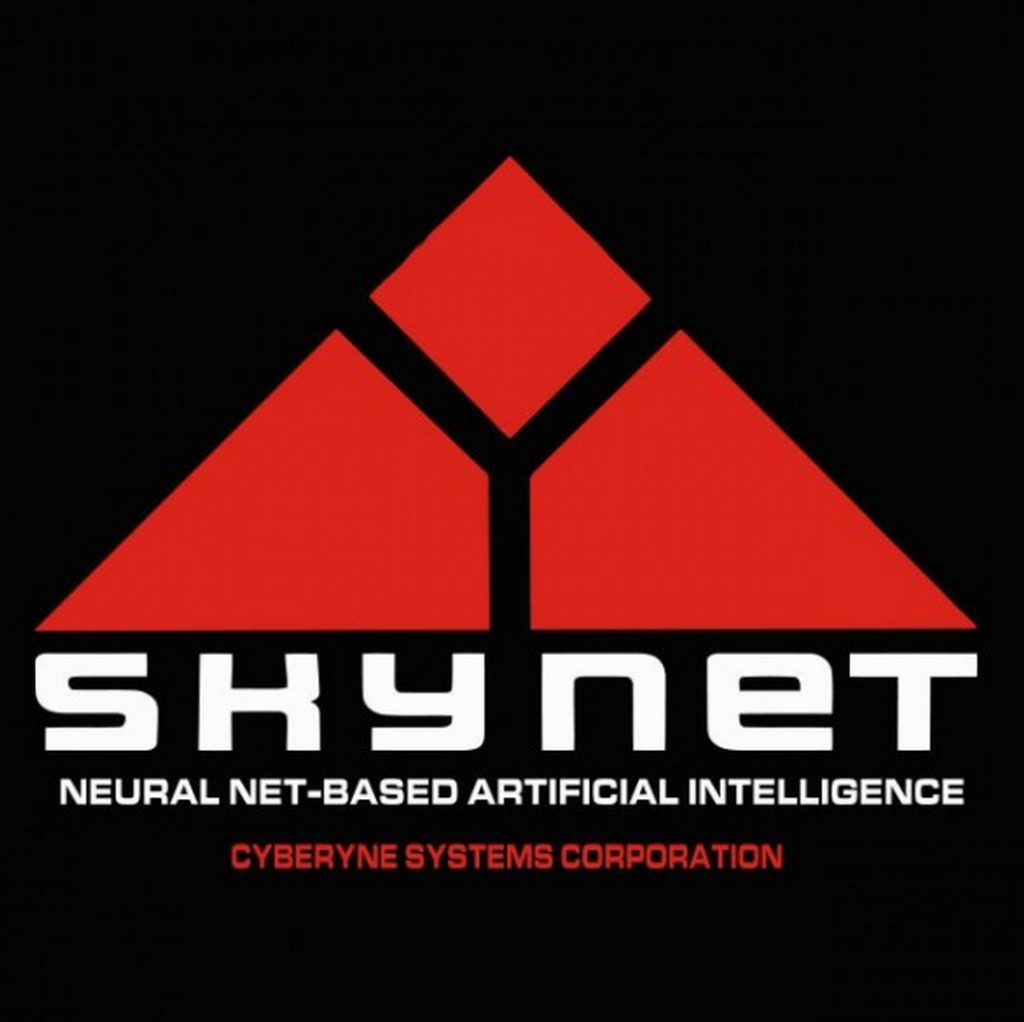
Skynet, self-aware artificial intelligence system featured in the Terminator series. “Skynet’s operations are almost exclusively performed by war-machines, cyborgs (usually a Terminator), and other computer systems, with the goal of exterminating the human race.” Courtesy of Wikipedia.
3. Smart Cities and Their Discontents
Using the network as an instrument of legibility is, of course, neither inherently evil nor merely the purview of private companies. It’s also a popular element of “smart cities,” a term that seems to cover a lot of practices but broadly refers to the trend of municipalities employing networked technologies to improve infrastructure. This can range from traffic cameras with automatic license plate readers (ALPRs) and more efficient power grids to predictive policing software and massive centralized surveillance systems.
Anthony Townsend, research fellow at NYU’s Rudin Center for Transportation Policy and Management and author of Smart Cities: Big Data, Civic Hackers, and the Quest for a New Utopia, observed that smart city rhetoric emerged around the same time as the global recession, when companies like IBM and Cisco that previously made money selling IT services and hardware to corporations turned their marketing attentions toward municipalities. That isn’t to say that smart cities are pure snake oil—governments absolutely should think of the network as a municipal concern. But with the rise of the smart city comes a particular context, and it means that public services are increasingly reliant on privately owned network infrastructure and technologies.
4. Municipal Networks
Some cities have chosen to take control of their own networks rather than establish public-private partnerships. More probably would, if not for the state-level laws that essentially ban municipal broadband in 19 states. The model cities frequently cited in studies of community-level broadband are often not major metropolitan areas but smaller cities that cable companies have less incentive to dominate. (As Christopher Mitchell at the Institute for Local Self-Reliance has noted, “Comcast and AT&T don’t really care about Chattanooga. They care a lot about Philadelphia. That’s where they do their best business.”). Some of these initiatives received funding from the 2009 economic stimulus program, which allocated $7 billion to improving broadband infrastructure.
Most of these initiatives have operated through existing utility companies—because, well, who better to operate city infrastructure than infrastructure providers? Chattanooga, TN, home to one of the more famous local fiber networks, actually began the project as an effort by electricity company EPB to improve its existing power grid.
While the FCC has been vilified for “breaking the Internet” with its proposed net neutrality rulemaking, FCC Chairman Tom Wheeler has been a champion of municipal broadband.Wheeler’s support seems to be more about market forces than loving community-driven infrastructure:
The facts speak for themselves: competition works—when it is allowed to. Throughout the country where we have seen competitive broadband providers come in to a market, prices have gone down and broadband speeds have gone up.
Making infrastructure needs a business decision goes hand-in-hand with smart city rhetoric, and the neoliberal implications of smart cities don’t disappear when cities own their own networks. Here’s a passage from a 2012 article about Chattanooga’s fiber network:
For example, [the city] put together a series of initiatives to monitor and control downtown areas. At one downtown park, the police can adjust the lighting to discourage flash mobs from gathering, as well as scan license plates on cars that are parked in the lot. This helps increase the perception of safety, not to mention discourage potential criminals.
Infrastructure is political, and if the body that controls that infrastructure happens to believe in policing “quality of life” through its smart grid, it doesn’t really matter if it’s IBM or the city of Chattanooga doing it.
But networks don’t necessarily have to be either in the hands of private companies or the hands of the state. In a rural region of the United Kingdom, Broadband for the Rural North (B4RN) has been building a gigabit community broadband network, operating as a not-for-profit cooperative.
5. If not Infrastructure, then Territory
A transportation reporter friend once told me that his newsroom has a policy that strongly discourages using the word “infrastructure” in their reporting. The logic, apparently, is that most people don’t care about infrastructure the way that, say, a transportation reporter or I care about it. And it’s understandable. Infrastructure is designed to be ignored. The word basically breaks down as “built things, below”—and that’s where it tends to remain: below. Below our feet and below all the other priorities we have in our day-to-day lives. We care about it when it isn’t working, we forget about it when it is.
It’s perhaps unreasonable to expect a public to constantly think about its infrastructure. I don’t recite an explanation of alternating current every time I switch on a light or actively contemplate the wonders of environmental engineering every time I drive on a highway. But the systems that maintain the power grid and maintain highways are, if bureaucratic, at least supposed to be legible to citizens. As artist Julian Oliver has described it, “With every receding seam, from cable to code, comes a techno-political risk. Without edges we cannot know where we are and nor through whom we speak.”
What has since 2002 been called network neutrality in today’s tech landscape might be better understood as a land grab. We have a hard time seeing the territory at stake because the lines aren’t drawn with flags or railroad spikes, but with glass threads and protocols and code running in the background. But these glass threads run through our cities and our homes, they have never been neutral and they have never been truly ours. I’m not sure that the demand for a neutral network corresponds to a demand for a network that belongs to its users. But to even begin to imagine how to create that network, that Internet we seem to think is ours, requires being able to see the network for what it is now.
